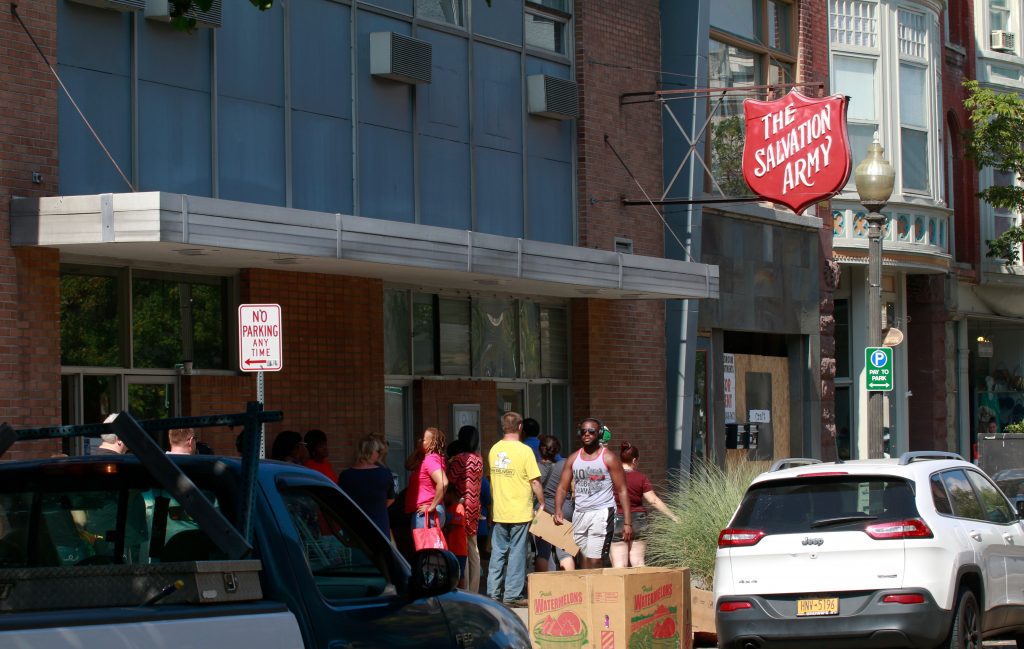
Some residents of the North Side of the city of Binghamton are forced to take city buses across the river to Downtown Binghamton to receive help from the Salvation Army, often spending extra money on bus fare. However, the construction of a new building at 530 State St. means that within two years these residents will be able to walk past the bus station and down the street to access the services they need.
Construction of the Binghamton Salvation Army’s new facility is currently ongoing on the North Side. The new building, to be located near the Family Dollar store on Chenango Street, will provide a host of new activities, opportunities and resources for the local community.
The current Salvation Army headquarters in Broome County, a 13,000-square-foot building located on Washington Street, was built in 1905 and remodeled in 1959. According to Chet Schultz, chairperson of the Binghamton Salvation Army advisory board, there are numerous problems with the current structure, leading the organization to look for a new location. Issues include expensive repair and maintenance costs and little access for people who have limited mobility. The building is simply too small to serve the community, Schultz said.
Maj. Ron Heimbrock, the Salvation Army officer in charge of the Binghamton unit, echoed Schultz’s comments regarding the lack of space at the old building. According to Heimbrock, the Salvation Army often had to keep people outside waiting during their soup kitchen and bread line services due to occupancy restraints.
“It has served the Salvation Army well over the years, but quite frankly, it’s falling apart,” Heimbrock said. “It doesn’t provide the space we need for the programs that we want to develop. We need a new building.”
With the construction of the North Side location, the Salvation Army aims to fill these gaps in its service and expand its role in the community. In a press statement, Heimbrock stated that the new location will make the Salvation Army’s services more accessible for Binghamton area residents.
“When we move to the North Side, we’ll be right in the middle of a neighborhood where children play and families live and where there are a lot of community needs,” Heimbrock said. “Our ministry will take on a whole new dynamic. We’ll be able to reach out to a new group of people with many more programs.”
The new location will boast a high school-size gymnasium and two commercial kitchens, one to serve as the soup kitchen and one for culinary job training. In addition, the building will include two computer labs, one operated by the Salvation Army itself and the other managed by the Advanced Technology Training and Information Networking program, a government program run through the SUNY system that aims to provide access to technology and computer literacy training in underprivileged areas.
The new facility will also serve as an opportunity for the Salvation Army to start working closely with similar organizations, including Advanced Technology Training and Information Networking, that are already active in the community. Laura Hamilton, the Binghamton Salvation Army capital campaign director, wrote in an email that having the Salvation Army work with other organizations will benefit the economy as a whole.
“We realized that by working together, we could reach more people through existing and enhanced programming,” Hamilton wrote. “This collaborative approach is innovative, sustainable and allows the Salvation Army and its partners to reach more people than ever before.”
The project, which carries a $6 million price tag, has raised more than 75 percent of needed funds. Last year, the Binghamton Salvation Army received a $1.7 million Consolidated Funding Award from the New York Regional Economic Development Council to help finance the plan and develop anti-poverty programs. Another $1 million has come from local foundations, with donations from community members and local businesses also contributing. A groundbreaking ceremony kicked off construction in April 2017, and officials estimate that the building will be complete by the spring of 2019.


